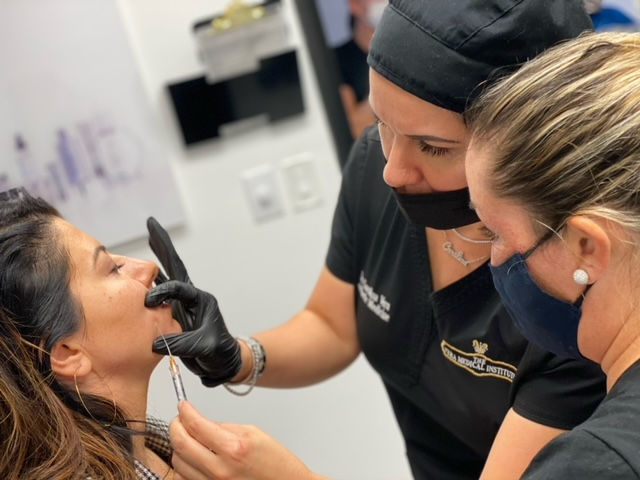Harnessing AI for Skin Cancer Detection in Aesthetic Practice
- Kathy Walton
- Oct 29, 2023
- 3 min read

As we step into 2024, one of the most promising AI devices that aesthetic practitioners can consider investing in is the DermaSensor's handheld Elastic Scattering Spectroscopy (ESS) device (1). This tool uses artificial intelligence to detect skin cancer across different Fitzpatrick skin tones, making it a valuable asset for practices aiming to provide comprehensive dermatological care.
Setting Yourself Apart from the Competition
Harnessing AI for Skin Cancer Detection in Aesthetic Practice

Investing in the DermaSensor ESS device can set your practice apart in several ways. Firstly, its ability to detect skin cancer across various skin tones broadens your client base, allowing you to cater to diverse demographics. This inclusivity can be a significant competitive advantage.
Secondly, the use of AI in skin cancer detection is an evolving conversation with the FDA (2). Being an early adopter of such advanced technology can position your practice as a pioneer in the industry, attracting clients who value cutting-edge medical care.
Using the Technology
The DermaSensor ESS device is non-invasive and straightforward to use. It works by evaluating suspicious skin lesions and providing data-backed insights to aid in diagnosis (3). As an aesthetic practitioner, you can use this device during routine skin checks or when a client presents with a concerning lesion.
The DermaSensor™ device works by emitting brief flashes of light onto the skin lesion. These light beams are reflected back and captured by the device's built-in computer, which provides valuable insights to aid physicians in assessing skin lesions, including melanomas, squamous cell carcinomas, and basal cell carcinomas. This information is crucial for making referral decisions.
By observing the variances in light scattering, DermaSensor™ can determine whether a skin lesion requires further investigation or monitoring. The decision is promptly relayed by the device.

Elastic Scattering Spectroscopy (ESS), the technology behind DermaSensor™, has been substantiated through over 30 clinical study publications. These studies have shown that the information provided by ESS is on par with histopathologic assessments when analyzing the cellular microscopic structure. The benefits of DermaSensor™ are manifold:
It quickly provides information about the subsurface layers of the skin, enhancing physicians' decision-making confidence.
Designed to boost early detection of skin cancer, DermaSensor™ facilitates timely referrals to dermatologists.
Patients will likely perceive DermaSensor™ as a beneficial supplement to their existing skincare regimen.
Its non-invasive nature makes DermaSensor™ less intimidating to patients, giving them reassurance about the quality of care they're receiving.
The machine-learning algorithm of DermaSensor™ is based on thousands of spectral samples from pathologically-verified lesions. Expert data scientists have meticulously trained this algorithm.
Upfront Cost and Charging for the Service

While the exact cost of the DermaSensor ESS device is not publicly disclosed, investing in such AI technology typically involves a significant upfront cost. However, the return on investment can be substantial given the potential for improved patient outcomes and increased client trust.
Charging for the service will depend on various factors including your location, client demographics, and standard industry rates. It's important to price the service in a way that covers your costs while also providing value to your clients. You may choose to incorporate the cost into your standard consultation fee or charge separately for the service.
In conclusion, investing in AI technology like the DermaSensor ESS device can be a game-changer for aesthetic practitioners. It not only enhances your diagnostic capabilities but also positions your practice at the cutting edge of aesthetic medicine, potentially increasing profitability and client satisfaction.
The Aesthetic Pathway Institute is dedicated to equipping its members with the most recent trends, news, and guidance to ensure your aesthetic practice thrives and prospers. Don't miss out on this opportunity to join an elite community – click here to become a member!
Footnotes
(source: Practical Dermatology) ↩
(source: Mass Device) ↩
.png)



Comments